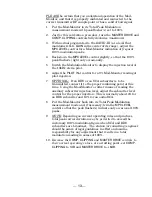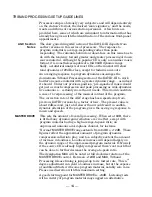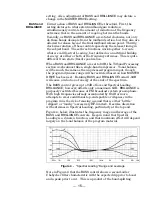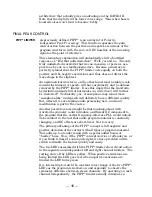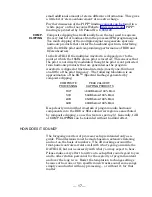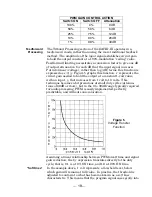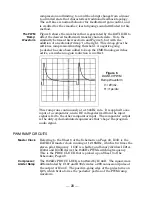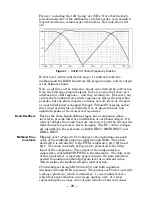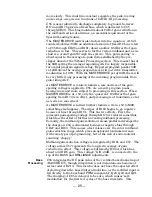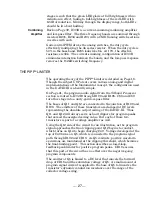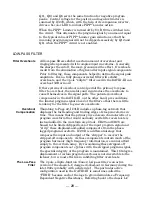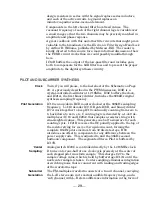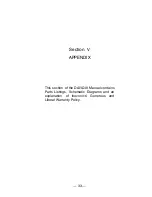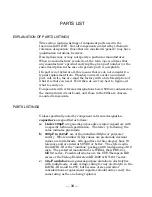
19
PWM GAIN CONTROL ACTION
Switch
ON Switch
OFF Attenuation
100%
0%
0dB
50%
50%
6dB
25%
75%
12dB
10%
90%
20dB
1%
99%
40dB
Feedforward
Processing
The Triband Processing section of the
DAVID-III
operates in a
feed
forward
mode, rather than using the more traditional feed
back
method. The amplitude of the
input
signal establishes circuit gain
to hold the output constant at a 100%-modulation ceiling value.
Feedforward limiting necessitates a conversion factor to give one dB
of output
attenuation
for each dB that the input signal
increases
.
Put into linear (voltage), rather than log (dB) terms, this function is
expressed as
x
=1/
y
. Figure 5 graphs this function.
x
represents the
circuit gain needed to hold the output at a constant 1-volt value,
with an input,
y
, that increases from 1 volt to 10 volts. This
technique becomes a bit precarious at small duty cycles (attenua-
tions of 40dB or more), but in the 0 to 30dB range typically required
for audio processing, PWM is easily implemented, perfectly
predictable, and without sonic coloration.
Figure 5
Voltage Transfer
Function
Assuming a linear relationship between PWM on/off time and signal
gain reduction, the 1/
y
expression translates directly to the duty
cycle; that is, 0.1 is a 10% ON time, and 1.0 a 100% ON time.
Soft Knee
In the example above, 1 volt represents a
threshold
level, below
which gain will remain at full value. In practice, the threshold is
adjusted to conform to what has become known as a
soft knee
characteristic. This means that the program signal eases
gently
into
compression and limiting to avoid the abrupt change from a linear









